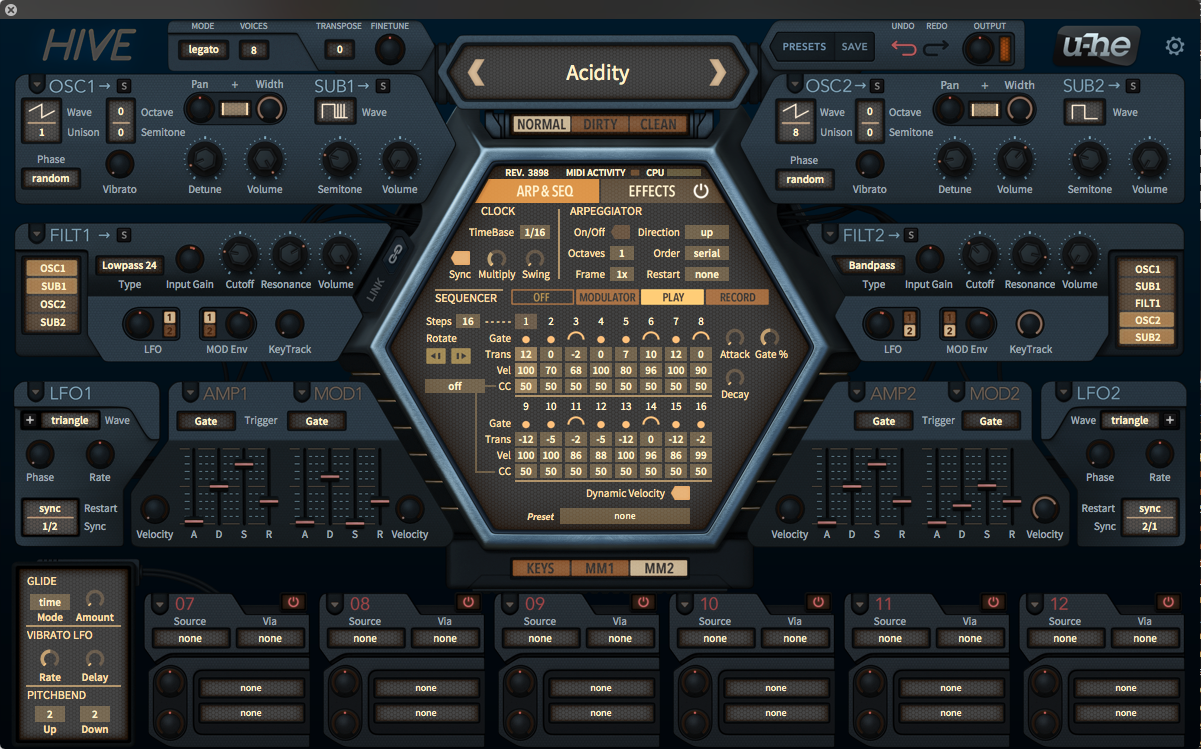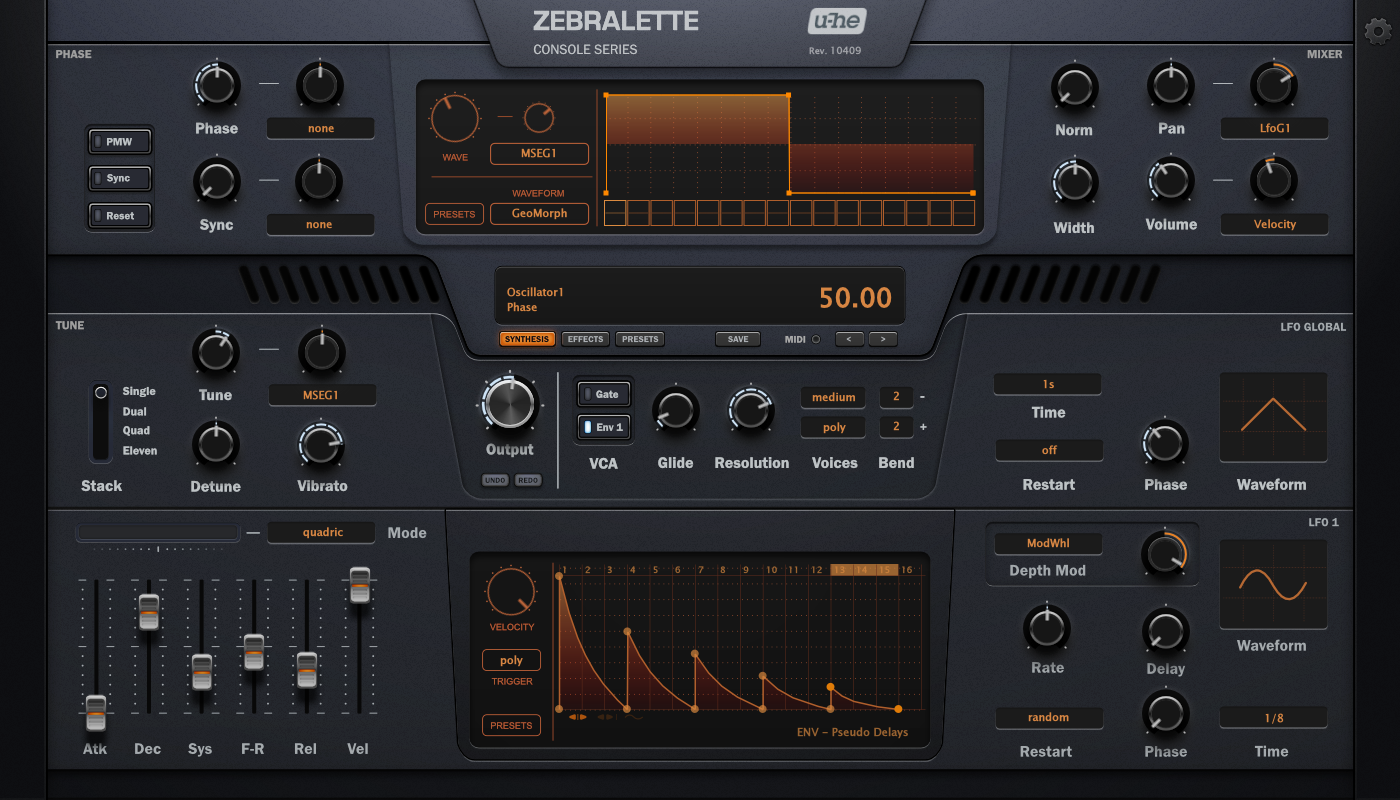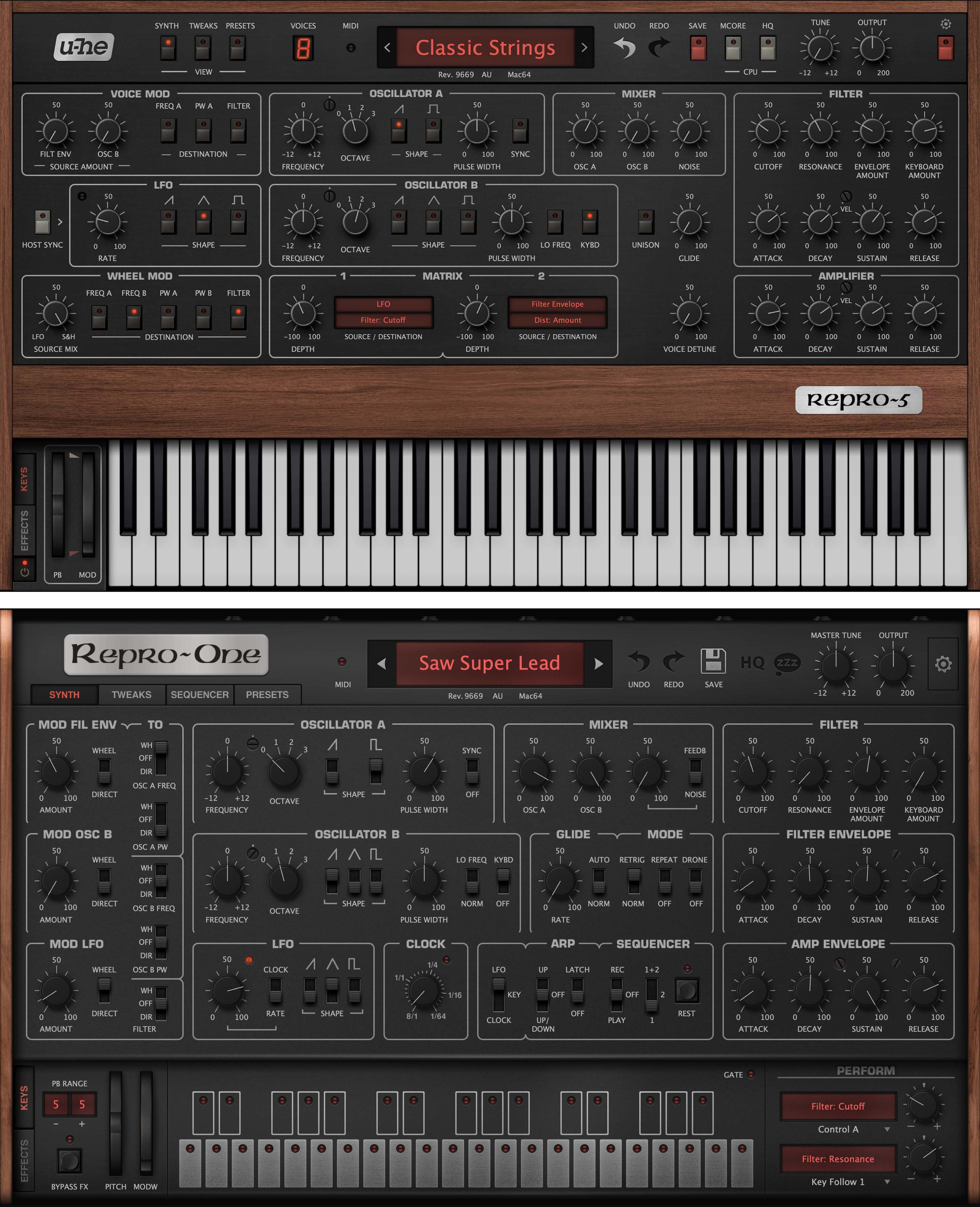

2 targets can be assigned per unit, each with its own modulatable depth control. U he Hive 2 features a 12-unit modulation matrix (6 units per page) which lets you connect modulation sources (LFOs, envelopes, shape sequencer, MIDI controls etc.) to countless targets, optionally via a second modulation source. Want more? Every control you see can be modulated in the modulation matrix – even a few you can’t see. short reverb into highly resonant phaser into heavy distortion.Įffects in U he Hive 2 are fully-featured with many editable controls, a selection of presets, and the well known u-he quality. This ease of use invites experimental combinations e.g. The on/off status and position of each effect in the chain is controlled using the central column: Click once to enable or disable an effect, and drag up and down to rearrange. Hive’s hexagon includes 7 different effects: Distortion, Reverb, Equalizer, Chorus, Delay, Compressor, and Phaser. In record (REC) mode you can enter individual notes on your keyboard or even capture the output of the arpeggiator. Like the arpeggiator, the sequence will run whenever one or more notes are played, and will stop when all notes are released. The sequencer has 2 different modes, one of which lets you send control signals (CC) without triggering any notes. Additional features are Restart, which sets the number of notes the arpeggiator will play before jumping back to the beginning, and ClockDiv, which slows the arpeggiator down relative to the sequencer. You can select up to 3 octaves range, 6 different direction options, and 4 for the order. The ARP/SEQ panel in the central hexagon is where you make rhythmic and melodic loops. Triggered and/or modulated by the LFOs, the Shape Sequencer and each other, Hive’s Function Generators can create some truly mind-bending motion effects! Arpeggiator and Sequencer Each of the three outputs has its own ‘crosshair’ you can drag & drop onto any modulation target, onto the Scope or even onto the modulation matrix source fields. U he Hive 2 ’s Function Generators combine simple envelope functionality with LFO, slew limiter (a.k.a.

The shape sequencer has four Shape Modulator lanes (A, B, C and D), each with an independent set of options determining how the active cells in that lane are sequenced: This means that the shape modulators can be triggered differently and run at different speeds! While it may look like a baby version of what other synths have to offer, Hive’s shape sequencer can do a lot more than first meets the eye… Function Generators The Shape Sequencer is where you can create complex modulations and/or rhythmic patterns, it offers a comfortable way to 'gamify’ rhythm creation. The spectral and zero phase modes shift the relative phases of partials differently, while the switch option only shows non-interpolated waveforms. The appearance (and CPU usage) of waveforms can differ significantly, depending on the chosen interpolation. U he Hive 2 provides 4 different algorithms for interpolating between wavetable frames: switch, crossfade, spectral, or zero phase. If you’re interested in writing your own scripts, grab this document (also included in the U he Hive 2 installer)… Interpolation Want to go even deeper? Many of Hive’s factory wavetables are not samples, but „.uhm” files containing scripts written in a proprietary wavetable generation and manipulation language. This feature opens up a second dimension of wavetable scanning, such as velocity crossfade or multisample support. The lower Position knob will crossfade between those 3. For instance, a wavetable with 30 frames can be split into 3 x 10 frames by setting Tables to 3.

Wavetables can be split into multiple parts (up to 16), effectively creating a 2-dimensional oscillator.


 0 kommentar(er)
0 kommentar(er)
